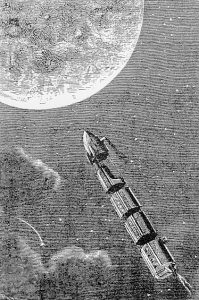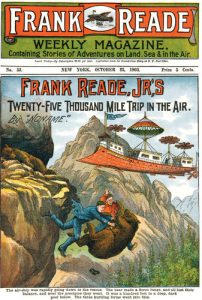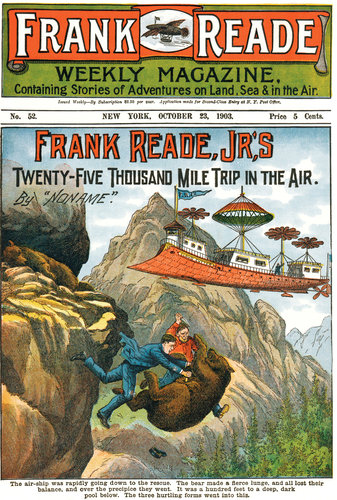 Way back in 1939, a sudden blossoming of magazine science fiction and fantasy occurred. Following the introduction of Startling Stories at the end of 1938, no less than eight pulps featuring fantastic fiction debuted in the next year–Dynamic Science Stories, Strange Stories, Science Fiction, Unknown, Fantastic Adventures, Future Fiction, Famous Fantastic Mysteries, and Planet Stories. Additionally, three other science-fiction pulps were in preparation during 1939–Astonishing Stories, Captain Future, and Super Science Stories–and the first World Science Fiction Convention was held in New York City, home to the World’s Fair and its “World of Tomorrow” theme.
Way back in 1939, a sudden blossoming of magazine science fiction and fantasy occurred. Following the introduction of Startling Stories at the end of 1938, no less than eight pulps featuring fantastic fiction debuted in the next year–Dynamic Science Stories, Strange Stories, Science Fiction, Unknown, Fantastic Adventures, Future Fiction, Famous Fantastic Mysteries, and Planet Stories. Additionally, three other science-fiction pulps were in preparation during 1939–Astonishing Stories, Captain Future, and Super Science Stories–and the first World Science Fiction Convention was held in New York City, home to the World’s Fair and its “World of Tomorrow” theme.
Over at Astounding Stories, editor John Wood Campbell was publishing the first science-fiction stories of Robert A. Heinlein, Theodore Sturgeon, and A. E. Van Vogt, as well as Isaac Asimov’s first story for the magazine and Hubert Rogers’ first cover. With his growing stable of writers and artists, Campbell was ushering in what would become known as the Golden Age of Science Fiction. But from whence did the genre come?
Although science fiction can trace its roots to such imaginary voyages, satires, and utopias as Francis Bacon’s New Atlantis (1626), Johannes Kepler’s Somnium (1634), Francis Godwin’s The Man in the Moone (1638), Jonathan Swift’s Gulliver’s Travels (1726), and other works, most modern scholars point to Mary Shelley’s Frankenstein, originally published in 1818, as the first science-fiction novel. In the years that followed the publication of this important work of both Gothic horror and science fiction, an increasing amount of fiction, once the province of books, found its way into magazines.
It was in periodicals that Edgar Allan Poe, best remembered for his horror and mystery tales, introduced logic and science to explain elements of the fantastic. Beginning with “Ms. Found in a Bottle” (1833), a story involving a sinking ship caught in a whirlpool leading toward the earth’s interior, Poe introduced science fiction to the short story. In the remaining sixteen years of his life, the author would periodically return to the genre in tales featuring trips to the Moon, new species, the death of the human race, the transmutation of lead into gold, and more.
 When Poe died in 1849, the strength of his stories kept them fresh and alive, inspiring authors the world over. One of these was Jules Verne who introduced “precise, scientific details” into his own writing, culminating in his first great triumph, Five Weeks in a Balloon (1863). Encouraged by the novel’s great success, the story’s original publisher, Pierre Hetzel, contracted the author to produce two novels each year for the next twenty years to run in a new periodical. Journey to the Center of the Earth (1864), From the Earth to the Moon (1865), Twenty Thousand Leagues Under the Sea (1869-70), Around the World in Eighty Days (1873), and Off on a Comet (1877) are just some of the masterpieces of science fiction penned by this master of the genre.
When Poe died in 1849, the strength of his stories kept them fresh and alive, inspiring authors the world over. One of these was Jules Verne who introduced “precise, scientific details” into his own writing, culminating in his first great triumph, Five Weeks in a Balloon (1863). Encouraged by the novel’s great success, the story’s original publisher, Pierre Hetzel, contracted the author to produce two novels each year for the next twenty years to run in a new periodical. Journey to the Center of the Earth (1864), From the Earth to the Moon (1865), Twenty Thousand Leagues Under the Sea (1869-70), Around the World in Eighty Days (1873), and Off on a Comet (1877) are just some of the masterpieces of science fiction penned by this master of the genre.
As the century progressed and Europe and North America became increasingly industrialized, magazines began to reach a much wider, sometimes national, audience. Blackwood’s Magazine, Harper’s New Monthly Magazine, Atlantic Monthly, Scribner’s Monthly, and others emerged, publishing the fiction of Walter Scott, Charles Dickens, Mark Twain, Fitz-James O’Brien, and others. The dime novels, penny-dreadfuls, and story papers also emerged during these years, offering tales of derring-do to a growing juvenile audience. It was here that the “American Jules Verne,” Luis Senarens, developed the Frank Reade, Jr. series that featured steam-powered contraptions in exciting adventure yarns.
 Still to come are H. Rider Haggard, Arthur Conan Doyle and The Strand Magazine, H. G. Wells and Pearson’s, Munsey’s and The Argosy and George Allan England. We’ll discuss these and more as we continue our examination of the offspring of Mary Shelley’s Frankenstein–the fantastic magazines of Europe and the United States–in anticipation of PulpFest 2014 on August 7 – 10.
Still to come are H. Rider Haggard, Arthur Conan Doyle and The Strand Magazine, H. G. Wells and Pearson’s, Munsey’s and The Argosy and George Allan England. We’ll discuss these and more as we continue our examination of the offspring of Mary Shelley’s Frankenstein–the fantastic magazines of Europe and the United States–in anticipation of PulpFest 2014 on August 7 – 10.
To learn more about the images used in this post, click on the illustrations. Click here for references consulted for this article.






